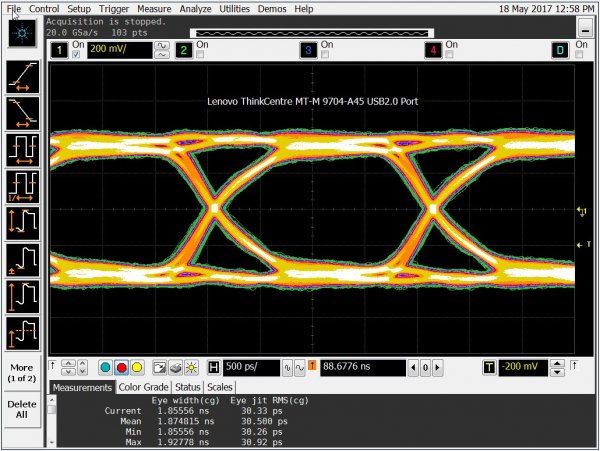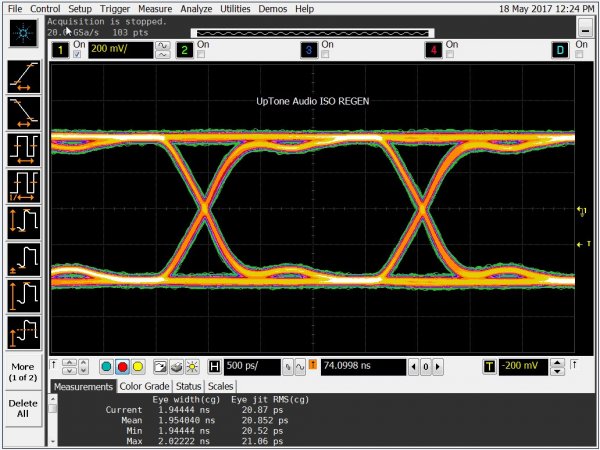My point was aimed towards what a DAC is designed to do. The measurements taken at the input before it is processed vs the measurements of what happens before it does it.
A DAC is only one element in the playback chain & the point made by Amir & you agreed with was that the DAC analogue out is what is listened to - it's not. So you & he are suggesting that the DAC's internal processing could make any changes in the input signal to the DAC, moot as far as hearing an audible difference. So far, so good?
Now if we follow this justification to it's logical conclusion, then the only the measurement at the speaker output (what we really DO listen to) is the ONLY area that measurements should be taken, right?
So why don't we insist on these speaker output measurements as the criteria for evaluating all devices that are put in the playback chain?
You know the answer to this & the same answer applies to DAC output measurements - there is no clear set of measurements yet which characterises what we hear - measurements have along way to go to meet this simple criteria.
So, what are we left with? Listening & hopefully measurement techniques & further research into how hearing works to guide us towards measurements which are better aligned to charcaterise what we are hearing. Until then we limp along with bits & pieces of the puzzle but with the final arbiter being what we hear
Amir's comment which I piggybacked would be in line with your suggestion as to why would any measurements matter if not at the end point where we listen to.
But Amir's comment was selective & wrong. I was correcting it to the logical conclusion that at the heart of his statement - measure the waveform that we ACTUALLY listen to. We all know that it currently isn't feasible to expect this at the moment, much as we would all like it to be possible.
This USB regen device while apparently making a difference before hitting the USB input may be redundant to what the DAC already does to the signal.
It may be but measurements will not prove this one way or the other - only listening to it in a playback system will. So I find it disingenuous (but a nice soundbite for masses) the attempt at claiming that because we can't yet measure the difference that is audible, is a reason to dismiss the device. This is exactly Amir's position & by your agreement with him, seems to be yours
This can measured at the output with and without the device in the stream. Measuring it before it hits the input doesn't necessarily call out to its measured performance at the output of the DAC.
Again, I would point you to the fact that current measurements don't characterise what we hear - in time we are hopeful that we can find the relevant measurements but your & Amir's premise is wrong - the premise being that everything audible is measurable.
I know the stock answer will be that measurements are far more accurate & sensitive than measuring equipment. But again, I have to point out the logical flaw in this approach - judging our hearing against the strengths of measuring equipment - this is always going to find measuring equipment superior based on this frame of reference. But what if we look at hearing & judge measuring equipment according to the strengths of auditory perception? A simple example - what measuring equipment can pick out a conversation stream from among a lot of other conversation streams happening nearby, in a noisy room with lots of other audible disturbances happening simultaneously - a task most find simple enough.
And guess what, the reason that our playback systems exist is because we use our hearing to listen to & derive pleasure from it, not because they do or don't measure "well" whatever that means!
Don't get me wrong, I would love to see such measurements emerge in time & I'm sure they will but I'm not stuck limiting myself by what current inadequate measurements show or don't show - they served us well & still do but they also should not be used as a brake (or weapon) to restrict the industry moving forward & making audible advances in technology, even if it isn't currently measurable











